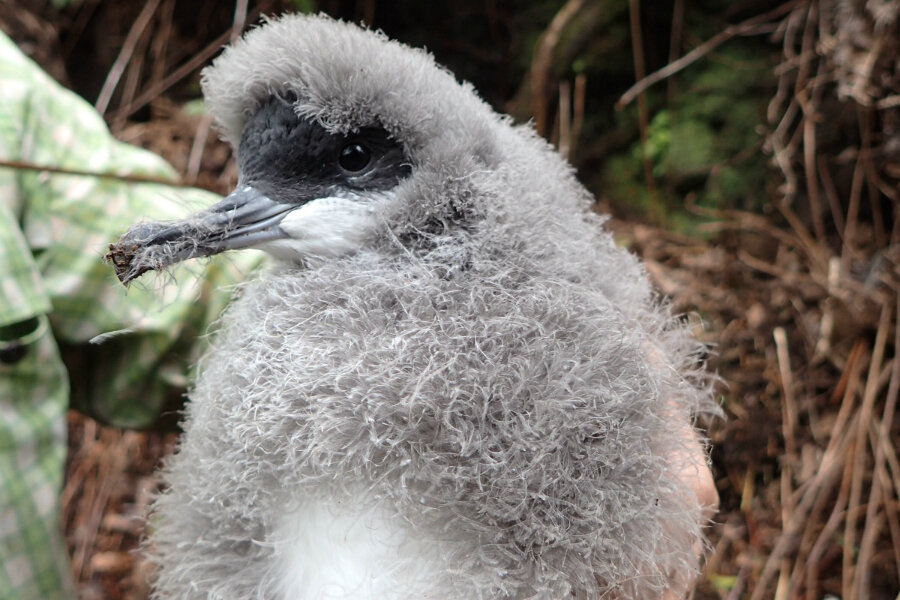Why Hawaii is hand-feeding squid and fish to baby birds
Loading...
In an effort to save a native Hawaiian seabird found nowhere else in the world, state and federal wildlife researchers and conservationists are removing young chicks from their nests and transporting them to the Kilauea Point National Wildlife Refuge.
Known in Hawaiian as ʻaʻo, the Newell's shearwater is an endangered species of puffin that makes it home in the Upper Limahuli Preserve on Kauai Island. But to save the native seabird, eight of the population’s baby birds were transported via helicopter to a protected habitat where they will stay until they are adults and fly out to sea.
"The predator-proof fence area within the refuge will provide a safe haven for the shearwaters which, like many other native Hawaiian bird species, are facing tremendous challenges with shrinking habitat and the onslaught of invasive species," Heather Tonneson, project leader for the US Fish and Wildlife Service Kauai National Wildlife Refuge Complex, told the Associated Press.
Last year, researchers successfully relocated 10 Hawaiian petrels, another threatened species native to Hawaii, to the same location. In the wildlife refuge, the shearwaters will live in boxes that have been built to resemble their natural burrows in order to smooth the shock of the habitat transition. There, researchers will feed the birds fish and squid by hand.
The Newell's shearwaters have experienced a recent decline in population because of an increase in predators such as cats, pigs, and barn owls. An increase in artificial light has also contributed to their demise by disorienting the birds, causing them to fly into man-made structures.
In fact, a report from the Center for Biological Diversity based in Tucson, Ariz., stating that "unshielded, poorly designed lighting has been one of the main causes of decline," for the Newell's shearwaters as well as the Hawaiian petrels. The situation lead the center to file a lawsuit against US Department of Defense, the US Air Force, and Kauai's Kokee Air Force Base for light pollution earlier this summer.
"These beautiful native birds deserve better than to die or get injured by flying into these lights," Brett Hartl, the Center for Biological Diversity's endangered species policy director, said in a statement. "The federal government is in charge of protecting endangered species across the country but sadly they’re failing these endangered birds on Kauai."
Researchers hope that, having grown up in the wildlife refuge, the birds will learn to return Kilauea Point National Wildlife Refuge to breed in the future and that eventually the species will rebound as a result.
"We are hopeful that translocation of this first group of chicks will mark the turning point in the downward trend for this species," said Hannah Nevins, director of American Bird Conservancy's seabird program, in a press release. "The future of the Newell's Shearwater on Kauai is dependent on multiple actions, from colony protection in the mountains to creating new predator-free colonies with fences, and continuing to mitigate light and collision impacts."
This project will be important in informing future conservation efforts for other endangered seabird species.
"We are very excited to have accomplished a major recovery objective for one of Hawaii's endemic seabird species," Lindsay Young, the project coordinator with Pacific Rim Conservation, said in a press release. "What we learn on this project will be crucial to implementing what we hope will be many more projects like this on Kauai and across the state."
Material from the Associated Press contributed to this report.








